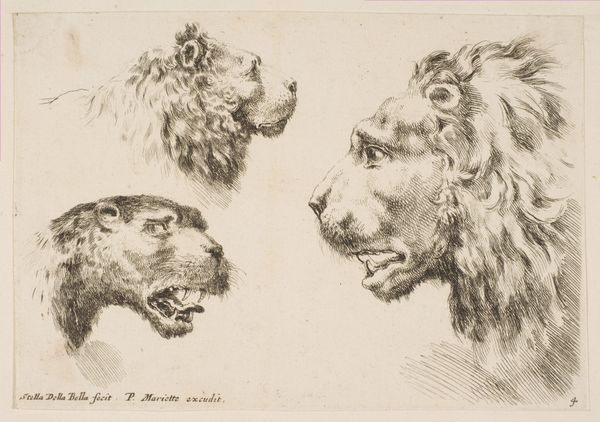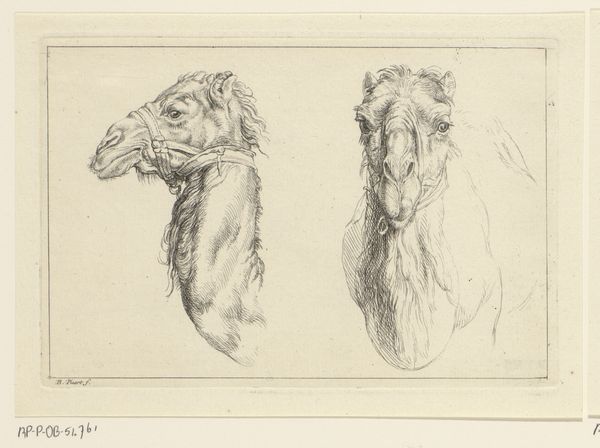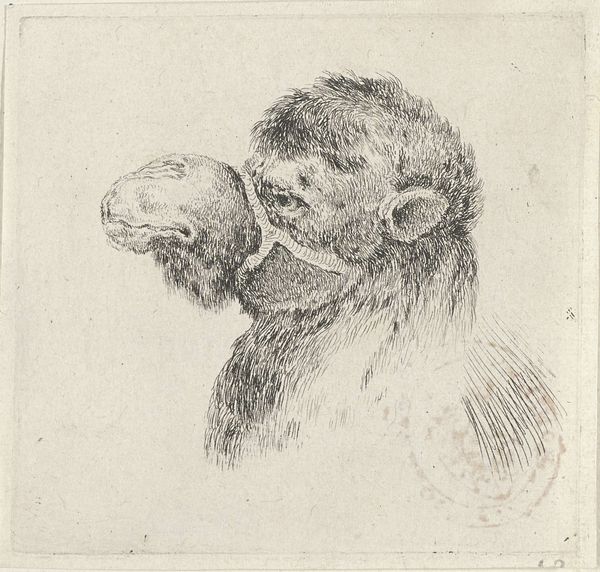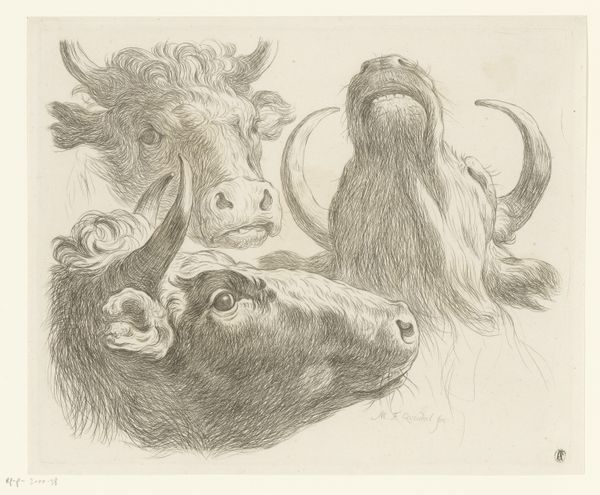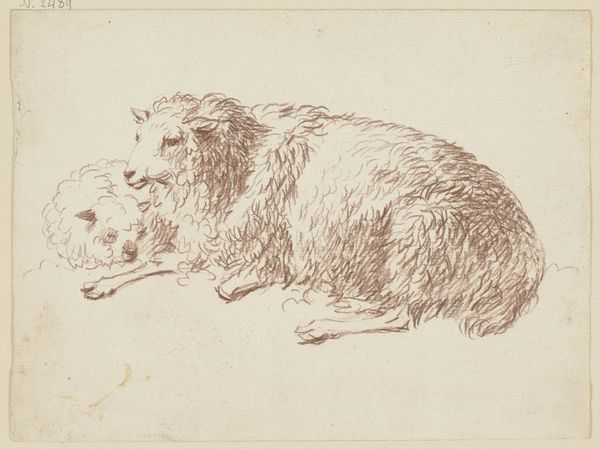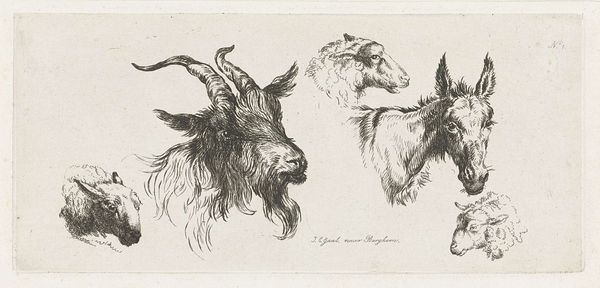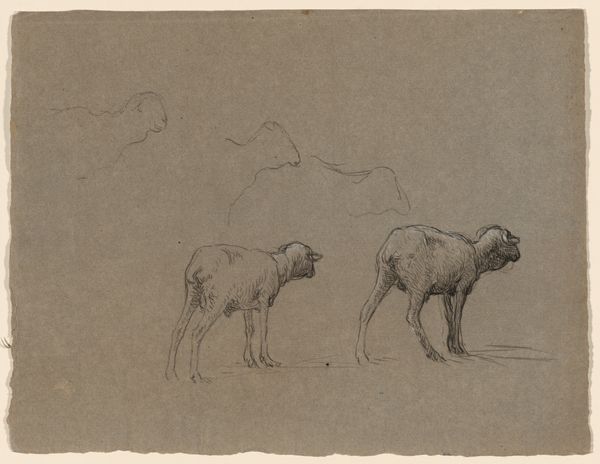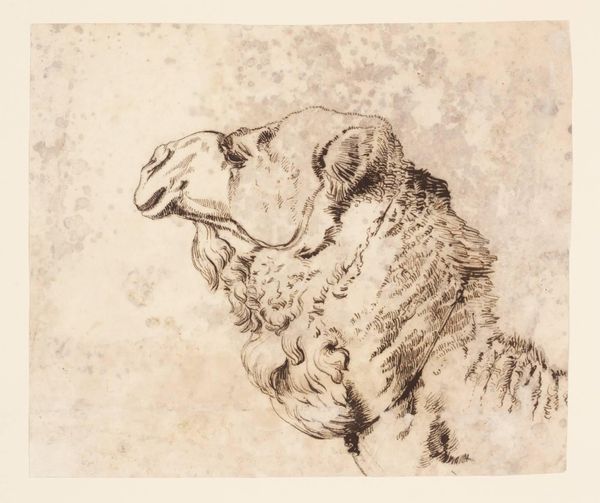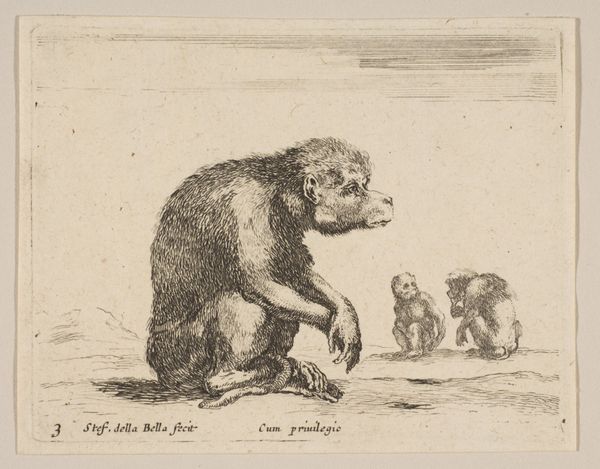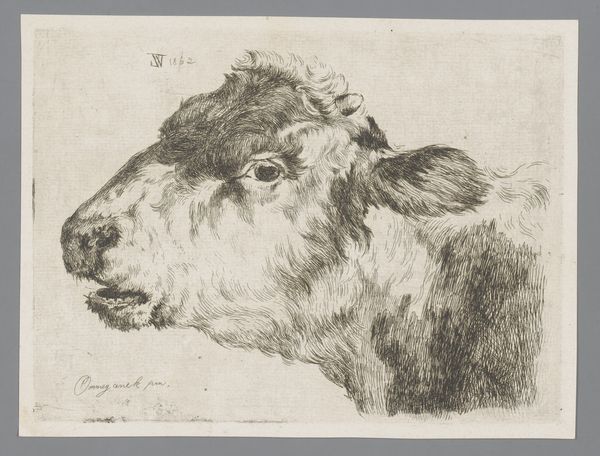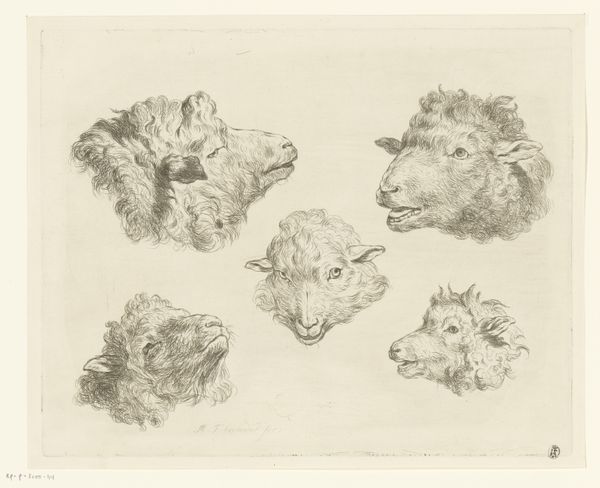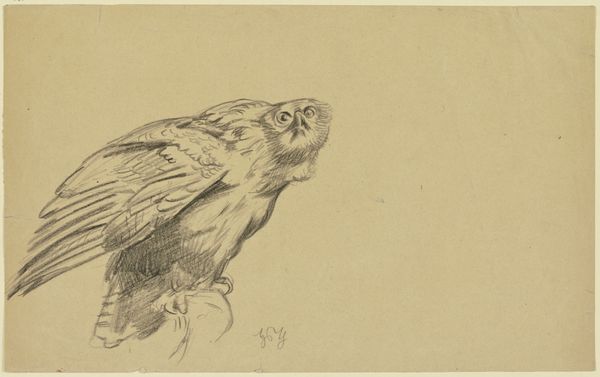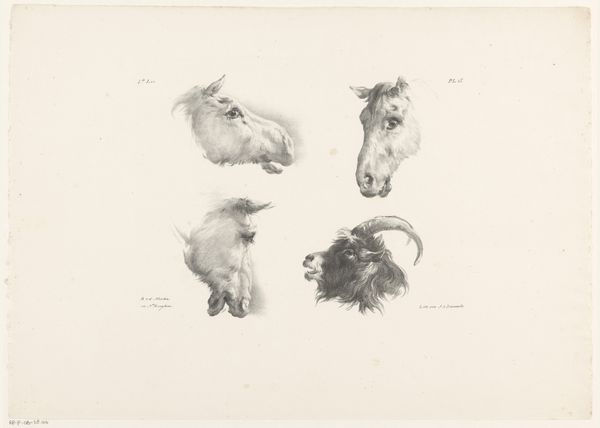
drawing, print, etching
#
portrait
#
pencil drawn
#
drawing
#
animal
# print
#
etching
#
pencil drawing
Copyright: Public Domain
Curator: What a striking pair of studies! This etching, “Two Camel Heads,” was created by Stefano della Bella sometime between 1636 and 1646. It currently resides here at the Metropolitan Museum of Art. Editor: My first impression is the sheer detail; the rendering of the fur, the soft shading. The overall effect is both intimate and a bit melancholic. I'm immediately curious about the etching process and what type of tools Della Bella might have employed. Curator: Exactly. The controlled chaos of lines— the deliberate mark-making! Consider the availability of paper, inks, and the printing press during this period. The rise of printmaking allowed for wider dissemination of images, thus playing a critical role in shaping perceptions about far-flung places and the animals that inhabit them. What narrative do you believe he was telling here? Editor: The subtle textures are fascinating. The lines clearly have an expressive quality beyond just depicting fur; you feel the camel's coarse hair against your fingertips, or at least imagine doing so. And to consider that multiple copies could be made! These camels enter many collections. Curator: Precisely, that's the core of it: availability. Looking closely, the material reality also hints at the labor involved— the preparation of the copper plate, the biting with acid, and the skilled hand required to create these delicate lines. And who was the target audience? Editor: I suspect this print was designed for an aristocratic or learned audience. Images like this were part of a broader system of knowledge production and consumption, reflecting European engagement with the rest of the world. It brings the foreign "home." Curator: Right. But I am thinking if a wider consumer audience would see the product after this process of creating prints; what happens after the production stage? It shifts from studio to shop, which really shapes our experience and access to the piece, does it not? Editor: Without a doubt, the journey this image took – from Della Bella's studio to the hands of collectors or casual viewers – informs its meaning and influence in the history of the etching and of representations of animals more generally. Curator: Indeed, exploring this work underscores not just its beauty but its fascinating materiality as an agent in history and production process. Editor: I agree. Pondering how these depictions helped construct a European vision of the exotic animal kingdom and how we now understand art feels particularly resonant.
Comments
No comments
Be the first to comment and join the conversation on the ultimate creative platform.

